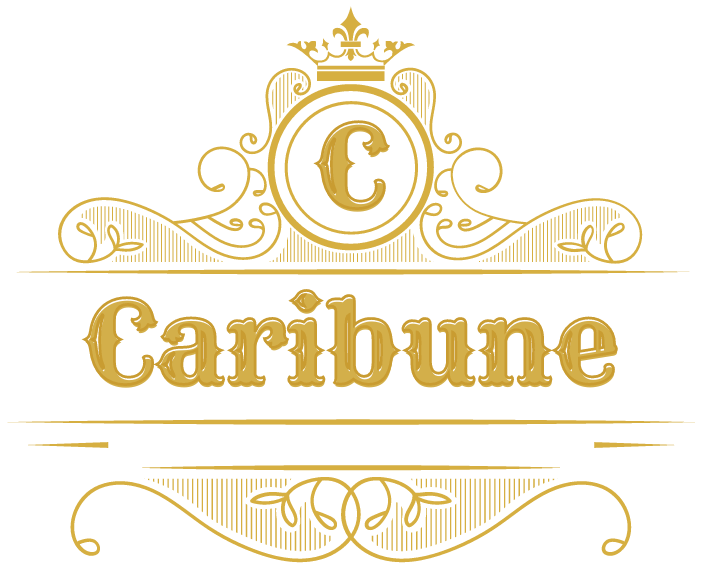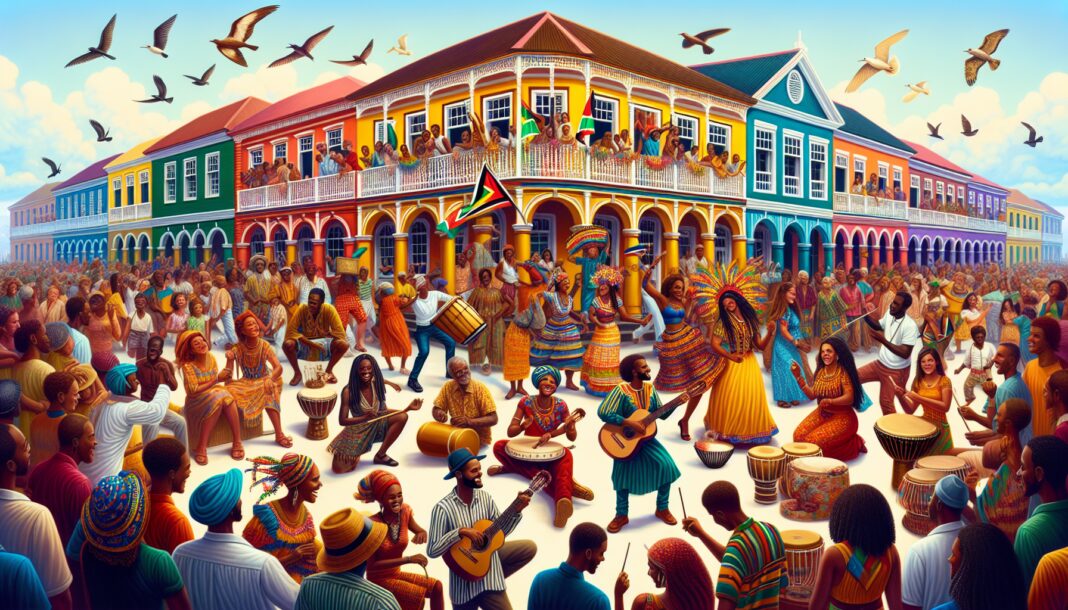The cultural heritage of Guyana is a vibrant tapestry woven from its Amerindian, African, East Indian, and European influences. With over nine Indigenous tribes and a blend of customs and celebrations, Guyana boasts one of the most diverse cultural heritages in the world.
This post delves into the rich traditions, art, music, and culinary practices that define Guyana’s unique identity, inviting readers to explore how these elements contribute to its dynamic society.
Discover the stories behind traditional festivals and ceremonies, and learn how history shapes contemporary Guyanese culture.
Exploring Guyana’s Indigenous Cultures
Guyana, a land rich in history and culture, is home to diverse indigenous communities. These Amerindian tribes hold centuries-old traditions and customs that continue to thrive today. This section delves into the fascinating history, lifestyle, and the ongoing efforts to preserve their unique heritage.
The History and Traditions of Amerindian Tribes in Guyana
The Amerindian tribes of Guyana have a deep-rooted history, tracing back thousands of years. Among the largest communities are the Arawak, Carib, and Wapishana tribes. Each tribe has developed distinct traditions influenced by their environment and beliefs.
- Arawak Tribe: Known for their agricultural skills, the Arawak people have a rich tradition of storytelling and music.
- Carib Tribe: Fierce warriors, the Carib have a legacy of craftsmanship, particularly in creating weapons and pottery.
- Wapishana Tribe: Valued for their weaving techniques, the Wapishana are also known for their medicinal knowledge derived from the rainforest.
These tribes celebrate various festivals and rituals, each symbolizing different aspects of life. For instance, the harvest festival is a time of gratitude and communal celebration.
Traditional Clothing and Crafts of Guyana’s Indigenous People
Traditional clothing among Guyana’s indigenous peoples serves not only a functional purpose but also signifies cultural identity. Clothing is typically made from natural materials like cotton, feathers, and beads.
- Attire: Men often wear loincloths, while women don skirts and shawls. These garments are frequently adorned with vibrant patterns and colors representing tribal affiliations.
- Crafts: Indigenous crafts include intricate beadwork, pottery, and woven baskets. These crafts are not only artistic expressions but also play a role in daily life.
Craftsmanship is often passed down through generations, ensuring the survival of these skills. The use of natural dyes and materials reflects a deep connection with the land.
Preservation Efforts for Indigenous Languages in Guyana
Many of Guyana’s indigenous languages are at risk of extinction. Efforts to preserve these languages are crucial for maintaining cultural heritage.
- Educational Initiatives: Schools in indigenous communities are incorporating native languages into their curricula.
- Community Programs: Language workshops and cultural events are organized to encourage younger generations to learn and use their native tongues.
These initiatives aim to revitalize interest in indigenous languages, ensuring they remain a living part of Guyana’s cultural fabric. As these languages carry the knowledge and traditions of their people, their preservation is vital.
The Influence of Colonial History on Guyana’s Culture
Guyana’s colonial past has left an indelible mark on its cultural landscape. The influences of British and Dutch colonization are evident in architecture, traditions, and societal structures. This section explores how colonial history has shaped contemporary Guyanese culture.
Architectural Heritage from the Colonial Era in Guyana
Guyana’s architecture reflects its colonial history, with influences from both the British and the Dutch periods. Georgetown, the capital city, showcases a blend of colonial and local styles.
- St. George’s Cathedral: One of the tallest wooden churches in the world, it exemplifies neo-Gothic architecture.
- City Hall: A striking example of Gothic Revival architecture, featuring intricate wooden carvings.
These buildings, with their historical and architectural significance, are preserved as part of Guyana’s heritage. They offer a glimpse into the country’s colonial past, while also being integral to its cultural identity.
British and Dutch Influences on Guyanese Traditions
Guyanese traditions have been significantly influenced by both British and Dutch colonial powers. This impact is evident in various aspects of everyday life:
- Cuisine: Dishes like pepperpot and Guyanese roti reflect a fusion of indigenous, African, and European culinary traditions.
- Language: English, the official language, is a remnant of British colonization. Additionally, Dutch influences linger in place names and certain dialects.
These influences create a unique cultural tapestry that is both diverse and harmonious. The fusion of different traditions has given rise to a distinct Guyanese identity celebrated across the nation.
The Legacy of Plantation Economy and Its Impact on Guyanese Society
The plantation economy, driven by sugar and rice cultivation, played a central role in shaping Guyana’s society. This legacy has had lasting effects, influencing social structures and economic practices.
- Labor and Migration: The importation of enslaved Africans and indentured laborers from India and China has contributed to Guyana’s multicultural society.
- Social Stratification: The plantation system established a class hierarchy, with lingering implications for economic disparities.
Despite the challenges of this legacy, Guyana’s diverse population stands as a testament to resilience and adaptability. The blend of cultures contributes to the country’s rich heritage and vibrant social fabric.
Vibrant Festivals and Celebrations in Guyana
Guyana’s cultural diversity is vividly displayed through its festivals and celebrations. These events are a testament to the country’s multicultural society, bringing people together in joyous unity. Let’s explore some of Guyana’s most vibrant festivities.
Guyana Carnival: A Celebration of Multicultural Unity
Guyana Carnival is a relatively new addition to the country’s festive calendar but has quickly become a major highlight. Celebrated in May, it attracts visitors from around the globe.
- Parades and Costumes: Carnival features colorful parades, music, and dance, with participants donning elaborate costumes.
- Cultural Performances: The event showcases cultural performances, including soca and calypso music, promoting cultural exchange and unity.
Guyana Carnival offers an opportunity for locals and tourists alike to experience the country’s dynamic culture, fostering a sense of belonging and pride.
Phagwah and Diwali: Vibrant Hindu Festivals in Guyana
Hindu festivals play a significant role in Guyana’s cultural landscape, reflecting the country’s Indian heritage. Phagwah (Holi) and Diwali are two of the most prominent celebrations.
- Phagwah (Holi): Known as the festival of colors, Phagwah marks the arrival of spring. Participants celebrate by throwing colored powders and water.
- Diwali: The festival of lights signifies the triumph of good over evil. Homes are decorated with oil lamps, and fireworks light up the night sky.
These festivals are celebrated with enthusiasm across Guyana, transcending cultural boundaries and highlighting the nation’s spirit of inclusivity.
Emancipation Day: Honoring the Journey to Freedom in Guyana
Emancipation Day, observed on August 1st, commemorates the abolition of slavery in Guyana. This day is a solemn reminder of the struggles and triumphs of enslaved Africans.
- Cultural Events: The day is marked by cultural events, including storytelling, music, and dance, celebrating African heritage.
- Reflection and Celebration: Emancipation Day is a time for reflection, honoring the sacrifices of ancestors, and celebrating freedom and resilience.
This important occasion underscores Guyana’s commitment to acknowledging its complex history while looking towards a future of unity and equality.
Conclusion
Guyana’s cultural tapestry weaves together diverse threads, each adding a unique hue to the vibrant national identity. The echoes of Amerindian heritage resonate through the land, reflected in traditional crafts and the melodic sounds of native languages striving for revival.
Colonial footprints, marked by intricate architecture and enduring traditions, narrate stories of British and Dutch influence intertwined with the echoes of the plantation era. This rich history finds harmony in the joyous celebration of festivals, where the streets come alive with the rhythmic beats of Guyana Carnival and the colorful splendor of Phagwah and Diwali.
These moments of shared joy and reflection bind communities together, fostering a sense of belonging and unity. Emancipation Day stands out as a testament to resilience and the unyielding spirit of freedom, commemorating a pivotal journey toward liberty.
In each festival, every language preserved, and through every architectural marvel, Guyanese culture thrives, honoring its past while embracing the future. The warmth and diversity of Guyana inspire awe, nurturing a deeper understanding of its compelling narrative, inviting everyone to be a part of its ongoing story.
FAQ
What are the main cultural influences shaping Guyana’s heritage?
Guyana’s heritage is a vibrant tapestry woven from African, Indian, Amerindian, Chinese, and European influences. These diverse roots are reflected in the country’s music, dance, cuisine, and art, creating a unique cultural identity.
How does Guyana celebrate its diverse cultural traditions and festivals?
Guyana comes alive with festivals such as Mashramani, Diwali, and Emancipation Day. These celebrations showcase traditional music, dance, and cuisine, offering a vivid glimpse into the nation’s rich cultural diversity.
What role do indigenous communities play in Guyana’s cultural heritage?
Indigenous communities are the original inhabitants of Guyana, deeply influencing the nation’s cultural landscape. Their traditions, languages, and crafts are vital to preserving and celebrating Guyana’s heritage.
How can visitors experience authentic cultural experiences in Guyana?
Visitors can immerse themselves in local culture by attending festivals, exploring traditional markets, and visiting indigenous villages. Engaging with local communities offers authentic insights into Guyanese life.
What museums and heritage sites are must-visits in Guyana?
The Walter Roth Museum of Anthropology and the National Museum of Guyana are essential stops. These sites offer deep dives into the country’s history and cultural evolution, making them perfect for history enthusiasts.
How has Guyana’s history impacted its modern cultural identity?
Guyana’s history, from colonial times to independence, has shaped its modern identity, blending diverse cultural elements into a unified national spirit. The country’s past informs its present, creating a distinct cultural mosaic.

